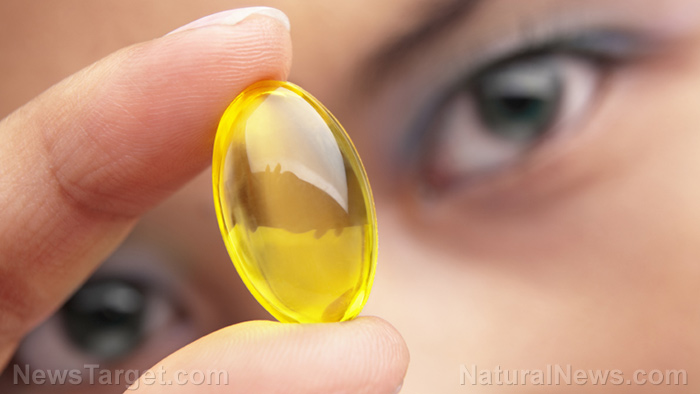Combine turmeric and black pepper to boost health benefits of curcumin
03/31/2019 / By Edsel Cook

The main weakness of curcumin can be overcome by taking black pepper alongside turmeric. Pepper contains its own incredibly healthy active compound, piperine. And one of piperine’s many health benefits is to increase the ability of the body to absorb other nutrients, especially those with low bioavailability like curcumin.
The similarities between black pepper and turmeric are considerable. Both are aromatic spices that are considered to be very healthy, thanks to the natural compounds they contain.
These same compounds are also responsible for specific characteristics of their source. Curcumin gives turmeric its yellow color, while piperine causes black pepper to taste pungent upon the tongue.
Although found in large amounts in turmeric, curcumin resists absorption by the digestive system. People can eat turmeric until they grow sick of the yellow spice, but they will only get so little curcumin in return for their trouble.
Piperine, on the other hand, enjoys a much higher level of bioavailability. Furthermore, it increases the biological availability of other nutrients. (Related: Did you know that turmeric is just as effective as 14 pharmaceutical drugs?)
Black pepper’s piperine increases the absorption rate of curcumin in turmeric
By itself, piperine can improve the efficiency of the digestive process and prevent inflammation that is linked with cancer and diabetes. These healthy activities allow it to boost the bioavailability of curcumin and other compounds.
Black pepper increases the efficiency of digestive enzymes that extract curcumin from turmeric. At the same time, it preserves turmeric from inflammatory processes that would normally break down the spice before it could be processed by the digestive system. It also explains why both spices are found in curry and other ingredients for spicy food.
In a 1998 study supported by St. John’s Medical College, Indian researchers found that consuming piperine could boost the bioavailability of curcumin in both humans and rats. Taking 20 milligrams of piperine made it possible for humans to get more than 20 times the usual amount of curcumin from a two-milligram dose. The increase was much more modest for rats, but still striking.
Based on these findings, a person should not consume as much turmeric – and only turmeric – as possible. Instead, it would be much more efficient for people to take a small dose of turmeric alongside black pepper.
Thanks to piperine, one could absorb as much curcumin from small amounts of turmeric as one would normally get from consuming very large amounts of the yellow spice alone. The recommended dose is one pinch of black pepper, or five percent of a teaspoon.
Here are some of the best ways to get both piperine and curcumin
The easiest and most obvious way to gain these health benefits is to eat foods that contain both turmeric and black pepper. Curry powder contains the two spices. So consider increasing the amount of curry-based meals in your diet.
Another way to boost the bioavailability of curcumin is to eat foods that have healthy fats. Coconut oil, for example, contains these good fats that improve digestion and delay the breakdown of turmeric until the curcumin can be absorbed.
You can combine this healthy oil with golden turmeric paste. The mixture is great for curries, salad dressings, and smoothies. Or you can brew turmeric tea and mix black pepper into it.
If making curry is too much of a hassle, or if the taste of turmeric turns out to be unbearable, consider getting a curcumin supplement that contains both black pepper and turmeric. Buy these natural supplements from certified sources. Start by taking a quarter teaspoon and increase the amount over the course of several weeks until you are getting a teaspoon twice or thrice a day.
Sources include:
Submit a correction >>
Tagged Under:
bioavailability, Bioavailable curcumin, black pepper, coconut oil, curcumin, health supplements, Herbs, piperine, turmeric
This article may contain statements that reflect the opinion of the author
RECENT NEWS & ARTICLES
FoodCures.News is a fact-based public education website published by Food Cures News Features, LLC.
All content copyright © 2018 by Food Cures News Features, LLC.
Contact Us with Tips or Corrections
All trademarks, registered trademarks and servicemarks mentioned on this site are the property of their respective owners.





















